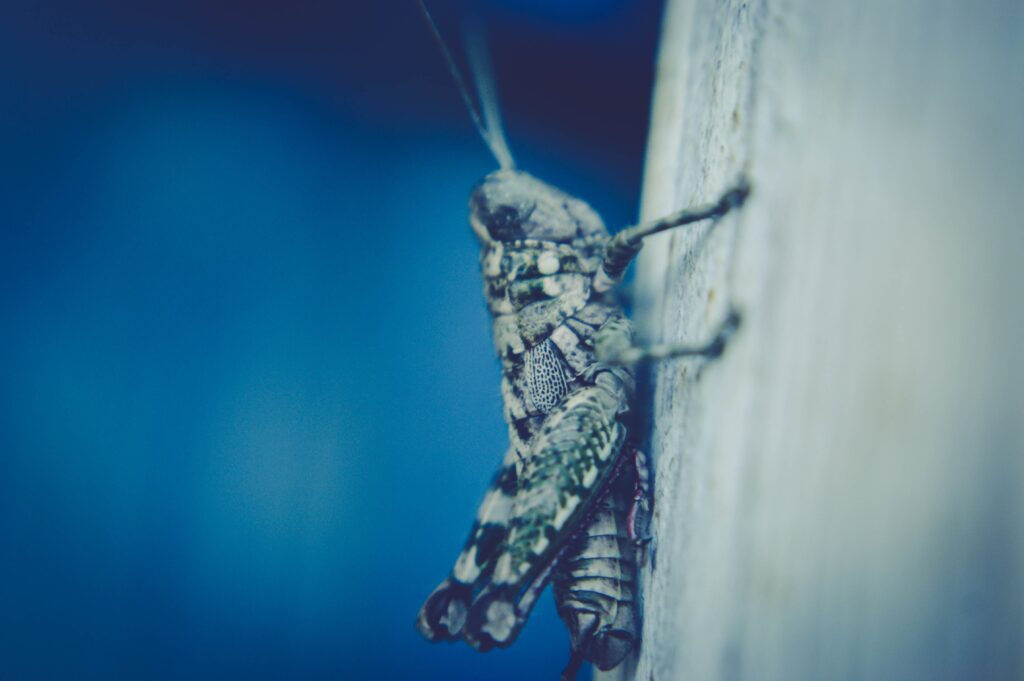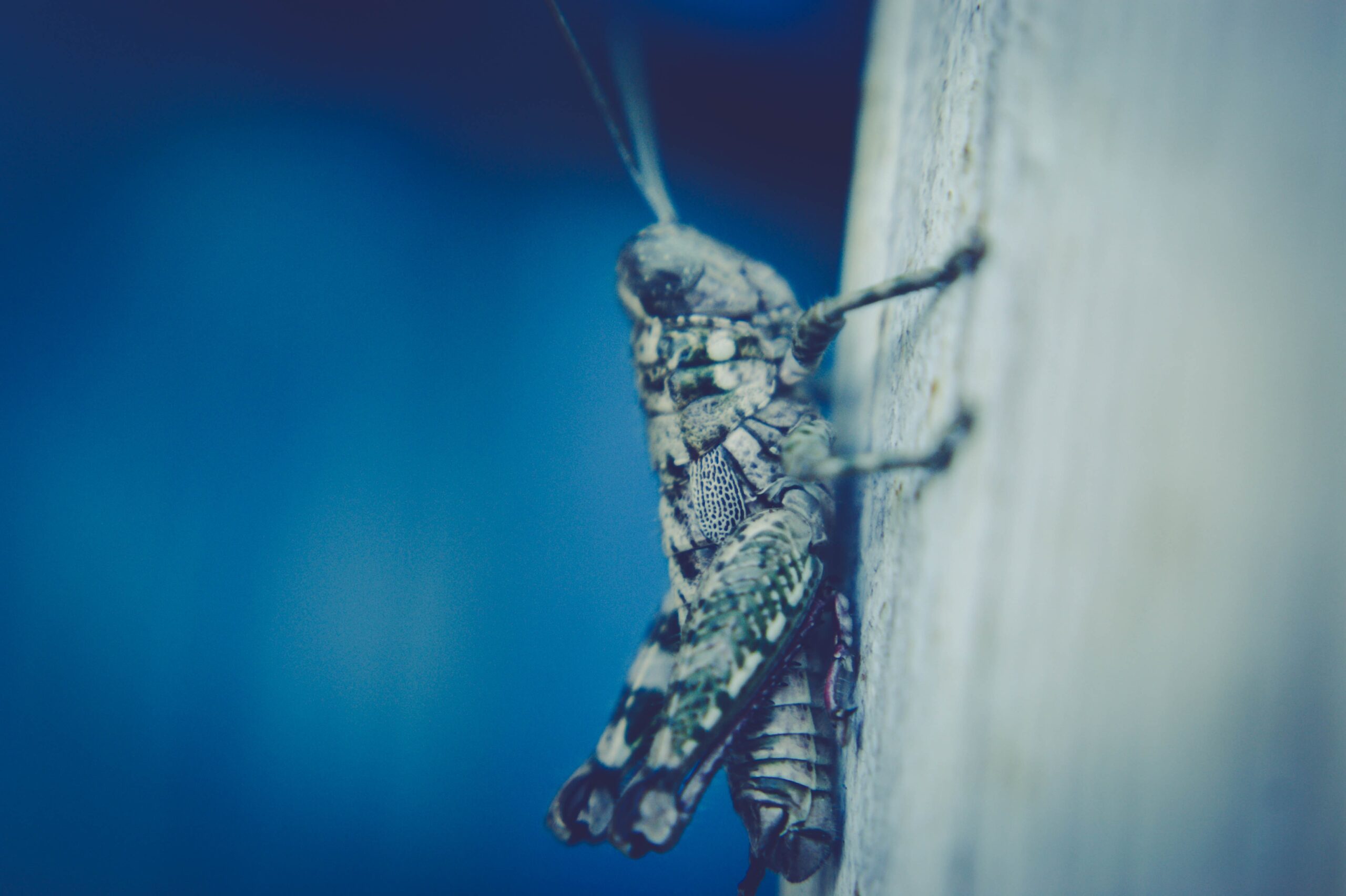Avoid cricket infestation by eliminating items that attract them, such as long grass and garbage piles. Seal cracks in your foundation and around windows/doors as well as sealing ductwork/AC lines to further deter crickets from entering.
Another effective strategy is using boric acid powder, widely available at gardening and hardware stores. When applied, this will kill them when they walk over it – just remember to wear protective eyewear and gloves while using it!
1. Use a flashlight
If the cricket chirps that keep waking you up are keeping you from sleeping soundly, there are several steps that may help eliminate them. First, use a flashlight to pinpoint their source before setting bait or spraying chemicals that kill crickets – just follow instructions carefully so as not to poison family or pets with an overdose of chemicals!
Camel crickets, also referred to as cave or spider crickets, are wingless insects with hues ranging from light tan to deep brown that thrive in humid, cool places such as caves or under rotting logs or leaves. While they often invade homes searching for food or shelter they also pose serious threats when invading carpeting, fabrics and clothing. Woolen and silk items especially can become vulnerable from being damaged.
Keep crickets at bay by reducing moisture, sealing potential entrance points and improving ventilation. Install a door sweep and use caulking to seal off small cracks in doors, windows and walls; firewood piles provide ideal cricket nesting locations.
Preventative measures against crickets include using a dehumidifier indoors to lower moisture levels and keeping grass cut short and shrubbery pruned to reduce hiding spaces for crickets. Furthermore, try switching your outdoor lighting from white fluorescent bulbs to yellow sodium vapor bulbs, which have less of an appeal for crickets.
Other natural predators of crickets include birds, frogs, snakes and lizards in your local ecosystem. You can encourage these predators by providing the right habitat – this might involve clearing away clutter or puddles from your yard; keeping woodpiles well away from the house; pruning trees and shrubs regularly so as to eliminate cricket roosting areas; pruning trees regularly to eliminate roosting areas for crickets. You could also take steps to improve lawn health through regular watering, mulching or reducing weeds – helping keep crickets at bay by eliminating sources.
2. Place a jar over the cricket
Crickets chirping away at night is generally an endearing sound; however, this behavior can quickly turn annoying if they enter your home in search of food, water or shelter – potentially damaging clothing, books and carpeting as a result of their arrival. You can stop these insects from coming inside by taking some simple measures – sealing any cracks where they could enter and running a dehumidifier to remove moisture which attracts them – that will stop their entrance into your home.
When you discover a cricket in your house, use a jar with a narrow opening and tight-fitting lid to capture it. A coffee can or other lidded container also works; alternatively a piece of cardboard may suffice – as long as it’s thin and strong. After having captured your cricket, take it outdoors where it can live comfortably without creating problems for residents.
To prevent crickets from entering your home in the first place, inspect dark areas where they might nest or lay their eggs – such as around patios and walkways, beneath decorative planters, and mulch piles. Check flower beds and garden weeds regularly for eggs laid by crickets too. Switch your outdoor lighting from incandescent bulbs to LED or motion-activated lights; additionally keeping grass cut regularly with sufficient watering; clearing away puddles/stick piles around your house can all help deter crickets from approaching too closely.
Another way to eliminate single crickets is with specific bait that targets them directly, like spray or granules. Such products are available from home and garden centers or hardware stores, although be careful when purchasing anything containing pesticides – these chemicals may kill other beneficial insects as well as crickets! To keep away from unnecessary harm it’s advisable to only use pesticide products when necessary.

Crickets are common household pests that can be difficult to get rid of. Here are some tips on how to get rid of crickets in your home:
- Identify the source of the crickets. Crickets are attracted to moisture and food, so the first step is to identify where they are coming from. Look for areas in your home that are damp or have food sources, such as under sinks, in cabinets, or in the kitchen.
- Seal up any cracks or holes. Crickets can enter your home through even the smallest cracks or holes, so it is important to seal them up. Use caulk or weather-stripping to seal up any cracks around windows and doors, as well as any holes in your foundation or siding.
- Remove food sources. Crickets are attracted to food, so it is important to remove any food sources from your home. This includes pet food, birdseed, and any other food that is not sealed in containers.
- Clean up any moisture. Crickets are also attracted to moisture, so it is important to clean up any moisture in your home. This includes spills, condensation, and leaks.
- Use traps and bait. There are a number of traps and baits that can be used to catch crickets. These can be purchased at most hardware stores
- Call a professional. If you have a severe cricket infestation, you may need to call a professional pest control company Here are some additional tips for getting rid of crickets in your home:
- Use diatomaceous earth. Diatomaceous earth is a natural insecticide that can help to kill crickets. Sprinkle it around your home in areas where you have seen crickets.
- Use ultrasonic pest repellers. Ultrasonic pest repellers emit sound waves that are inaudible to humans but can be annoying to crickets. These can be purchased at most hardware stores.
- Make your home less attractive to crickets. Crickets are attracted to light, so keep your lights off at night. You can also try using citronella candles or other insect repellents to keep crickets away.
By following these tips, you can help to get rid of crickets in your home and keep them from coming back.
3. Place a piece of cardboard over the jar
At night, crickets can keep us awake chirping their melodic tune. But these insects are more than merely annoying; they play an integral part of ecosystem and recycle nutrients from soil into birds’ food source, including snakes, frogs and mice – they provide food sources too! But when their population gets out of control it becomes an issue for humans as well. There are various strategies available for managing cricket populations before they get too numerous.
Step one in tracking down crickets and their eggs is to identify where they live; listen out for any sounds of cricket chirping during the night, follow any sounds and look for areas with darkness and privacy such as bushes or gardens that offer this shelter.
Once you’ve located an area to check, set a trap in place. One method of doing so would be using a jar; add a piece of cardboard before covering it with newspaper to prevent crickets from escaping their trap. This should work.
Place a piece of cardboard over light fixtures to keep crickets at bay. Additionally, use a spray bottle filled with garlic powder, chili pepper powder and dish soap in combination with garlic spray to effectively repel crickets from entering your house.
An effective method to get rid of crickets is sprinkling strips of boric acid around your home’s exterior. This powder will damage their nervous systems and kill them; be sure to wear gloves and a mask when applying boric acid and read its directions thoroughly prior to using it.
If your cricket problem is severe, professional pest control services will likely recommend the most effective plan of attack. In the meantime, try to eliminate conditions that attract crickets by mowing and weeding flower beds regularly or moving woodpiles away from your house and replacing bright outdoor lighting with yellow bulbs or sodium vapor lights – or both!
4. Take the cricket outside in Phoenix, Arizona
Crickets chirp loudly at night and their sounds can easily travel through walls. Their courting ritual involves male crickets rubbing their back legs together in order to attract female crickets; their presence is ubiquitous throughout America, although many homeowners don’t appreciate having these insects near their homes.
To prevent crickets from entering your home, the key to success is making sure there are no cracks or crevices through which they could enter. Seal any openings in your foundation, doors and windows using caulk; repair broken screens and door sweeps as soon as possible; maintain grass mowing services nearby to discourage crickets from seeking shelter there; as well as keeping grass cut short and clearing away brush to discourage crickets from seeking refuge there.
Employing a flashlight, thoroughly examine your property for signs of crickets. Pay particular attention to dark areas where they tend to nest, such as beneath patio or walkway planters, compost pile, layers of mulch and under appliances and vanity cabinets inside your home – also keeping an eye out for crickets running under carpets and corners of rooms!
Baits or sprays specifically tailored to targeting and repelling crickets can also be purchased at most home and garden centers, and should be safe when used according to manufacturer instructions. Many such products contain boric acid which is toxic to crickets as well as other pests – wear gloves and a mask when applying this chemical as it could endanger children or pets in your household.
If you prefer not to purchase products, an effective and simple home remedy for crickets may be making your own homemade cricket killer using molasses and water mixed into a clean soda can. The sweet liquid will attract crickets while its sticky surface traps them inside. While this approach works effectively, store-bought bug spray may provide more reliable coverage.
Reduce cricket infestation by decreasing light in your yard. As crickets are nocturnal creatures, bright outdoor lights may draw them in to your property – you can reduce this attractors by switching your outdoor lights over to motion activated or low wattage bulbs for better control of cricket enticements on your property.










